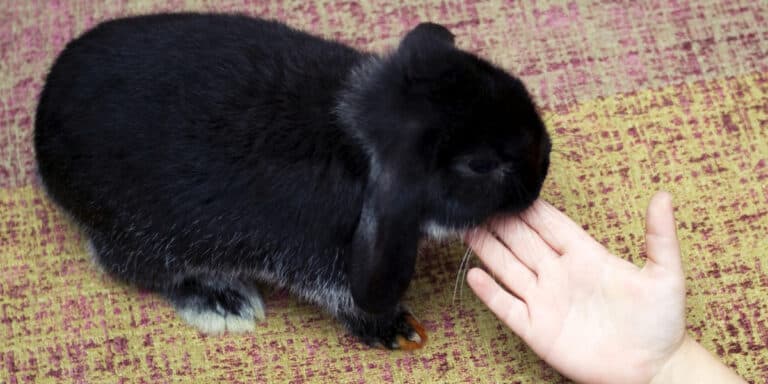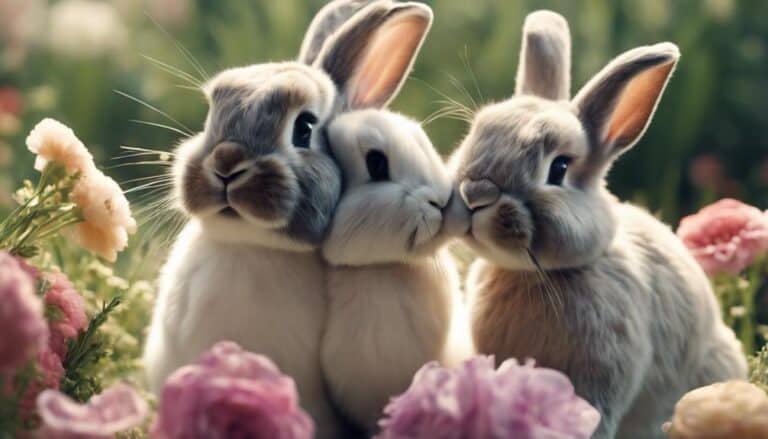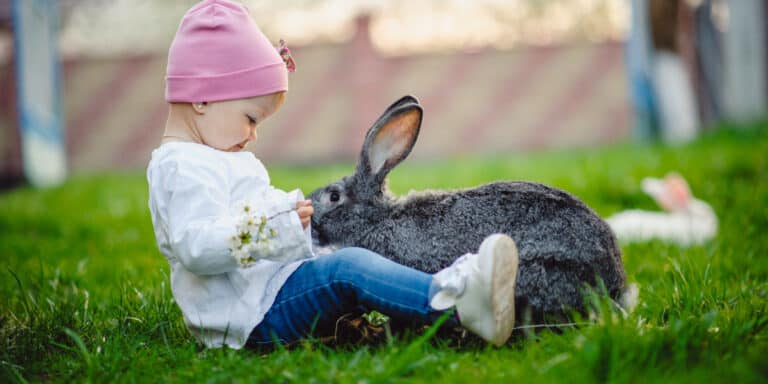When it comes to understanding bunny affection, it's like deciphering a hidden key that opens a world of silent communication between you and your furry friend. From subtle ear movements to gentle nudges, rabbits have a unique way of expressing their feelings that can sometimes leave you puzzled.
But fear not, for beneath their fluffy exterior lies a wealth of nonverbal cues waiting to be decoded. As you begin to unravel these mysteries, you'll discover a deeper connection with your bunny that will enrich your bond in ways you never imagined.
Contents
Key Takeaways
- Slow blinking and snuggling show trust and affection.
- Front paw nudges and grooming display love and attention.
- Licking humans indicates acceptance and inclusion.
- Understanding bunny gestures helps create a bond.
Types of Bunny Sounds
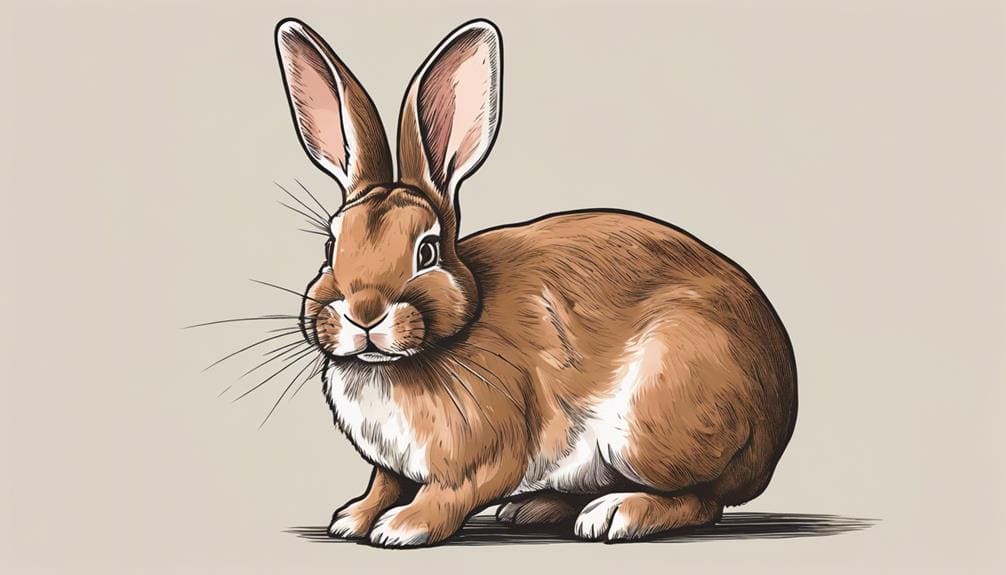
When deciphering the types of sounds emitted by bunnies, understanding their meanings is essential for effective communication and care. Bunnies utilize a variety of sounds to express themselves, showcasing their excellent communication skills through honking, teeth grinding, thumping, screaming, and grunting.
Honking is a clear indication of happiness, serving as a vocal expression of excitement or joy in bunnies. On the other hand, teeth grinding can be a bit more critical as it can signify both pleasure and discomfort. Context becomes essential in interpreting this sound accurately. Thumping is a common behavior in rabbits, often used to communicate danger or express fear.
If a bunny is screaming, it's a sign of extreme distress that warrants immediate attention and care, as it could indicate intense pain, fear, or danger. By paying attention to these different sounds, you can better understand your bunny's emotions and needs, ensuring a strong bond based on clear communication.
Reading Bunny Body Language
To further understand your bunny's emotions and needs, observing their body language provides valuable insights into their feelings and communication cues. Rabbit body language serves as a window into their world, offering nonverbal cues that can help you decipher their state of mind.
Trust indicators such as a relaxed rabbit laying on their tummy with rear legs tucked under signify contentment and a sense of security. When a rabbit stands up on its hind legs with ears forward, it's expressing curiosity and evaluating its surroundings.
Behavioral cues like nudging indicate a desire for interaction or grooming, while licking humans shows acceptance and inclusion in their social group. Additionally, when a rabbit flops over, it signals a feeling of safety and relaxation within their environment.
Understanding Bunny Gestures
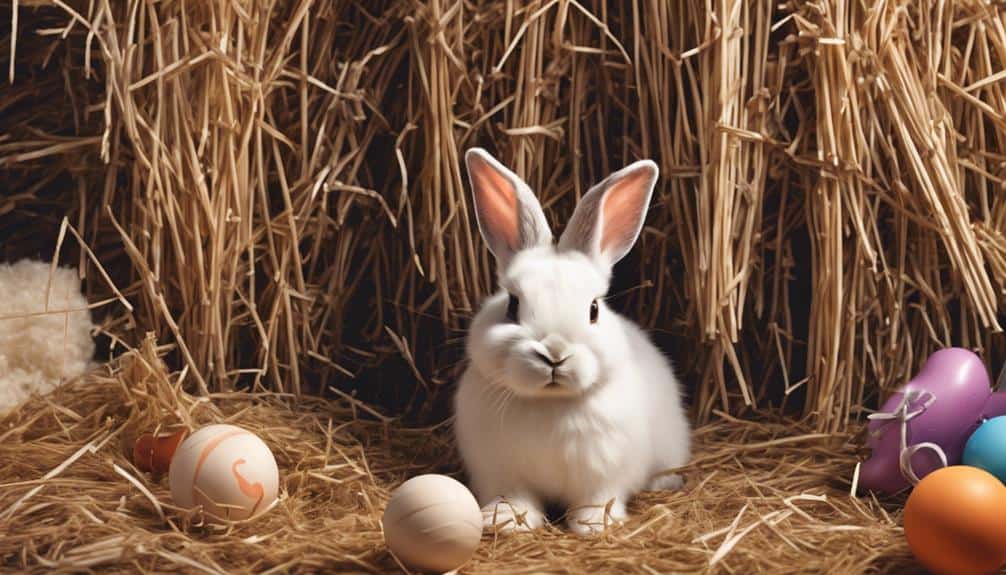
Understanding bunny gestures provides key insights into how these animals communicate their emotions and needs through nonverbal cues. When interacting with your pet rabbit, it's crucial to pay attention to the signals they display.
For instance, if a rabbit runs circles around you, it could indicate excitement or a desire to play. However, tail wagging and 'happy feet' movements are typically associated with happiness and contentment in rabbits.
On the other hand, certain gestures may signal fear or discomfort in your pet rabbit. If you notice behavior like hiding or freezing, it could be a sign that your rabbit is experiencing pain or fear. Understanding these unique communication methods can help you create a safe and secure environment for your furry companion.
Deciphering Bunny Affection Cues
Deciphering Bunny Affection Cues involves observing subtle behaviors and gestures that convey your pet rabbit's feelings towards you. Understanding these cues is important for building a strong bond with your furry friend. Here are some key behaviors to look out for:
- Front Paws: Your bunny may gently pat or nudge you with their front paws as a sign of affection and seeking attention.
- Mark Their Territory: Bunnies may rub their chin against you or objects to mark their territory, showing a sense of ownership and affection.
- Grind Their Teeth: The sound of teeth grinding, often accompanied by a relaxed body posture, indicates contentment and affection towards you.
- Hind Legs: Standing on their hind legs can be a way for bunnies to show excitement and affection, especially when you approach them.
- Running Around: When your bunny hops and runs around you in circles, it could be a playful display of affection and a desire for interaction.
Interpreting Bunny Nonverbal Signals
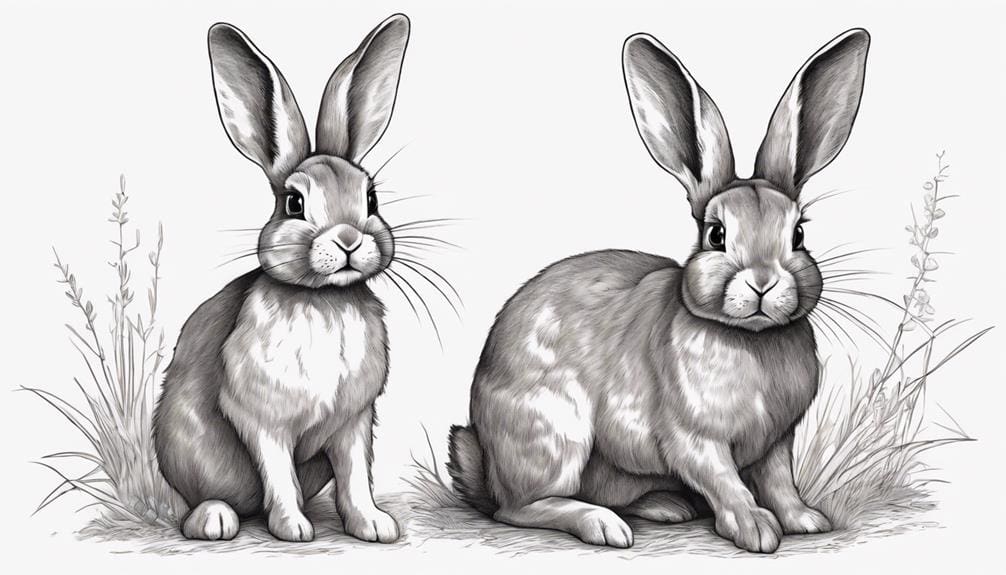
Interpreting Bunny Nonverbal Signals involves keen observation of subtle cues in your pet rabbit's behavior to understand their feelings and communication. Rabbits express affection through various nonverbal cues, such as gentle nudges and grooming behaviors towards their owners. When your rabbit slow blinks or closes their eyes softly, it signifies trust and relaxation.
Leaning against you or seeking physical contact demonstrates a strong bond and affection they've towards you. Additionally, when rabbits lick or groom their human companions, it shows acceptance and love. If your rabbit snuggles close to you or lies next to you, it indicates comfort and affection.
Frequently Asked Questions
Do Rabbits Communicate Using a Secret Code?
Rabbits don't communicate in a secret code; they express affection through body language like nudging and grooming. Bunny kisses, flopping, and eye contact show love. Licking, cuddling, and tail wagging indicate acceptance and trust. It's all about understanding their nonverbal cues.
How Do You Read a Rabbit's Emotions?
To read a rabbit's emotions, observe their body language, ear positions, and nonverbal cues. For example, when your bunny nudges you for attention and licks to show affection, they are expressing love and seeking closeness with you.
How Do Bunnies Say I Love You?
When bunnies love you, they show it through various nonverbal cues. Bunny behaviors like grooming, binkies, leaning, nudging, purring, and teeth grinding are affection gestures that demonstrate their emotional expressions and attachment signs.
How Do You Know if Your Bunny Is Attached to You?
You know your bunny is attached when they follow you around, greet you enthusiastically, and engage in bonding behaviors like grooming or playful binkying. These behavior patterns, physical cues, and affectionate gestures all signal strong emotional connections and trust.
What are the Nonverbal Communication Secrets of Bunny Affection?
Bunny behavior and communication involve various nonverbal cues to show affection. This includes gentle nudges, licking, and grooming each other. Bunnies also communicate through body language, such as turning their back or thumping their feet when upset. Understanding these nonverbal signals is key to fostering healthy bunny relationships.
Conclusion
You've now revealed the secret language of bunny affection, allowing you to connect with your furry friend on a deeper level.
By mastering the art of decoding their nonverbal cues, you have opened a world of communication and understanding that will strengthen your bond like never before.
Get ready to be amazed by the love and connection you'll experience with your bunny companion – it's a whole new level of bunny affection waiting for you to explore!


